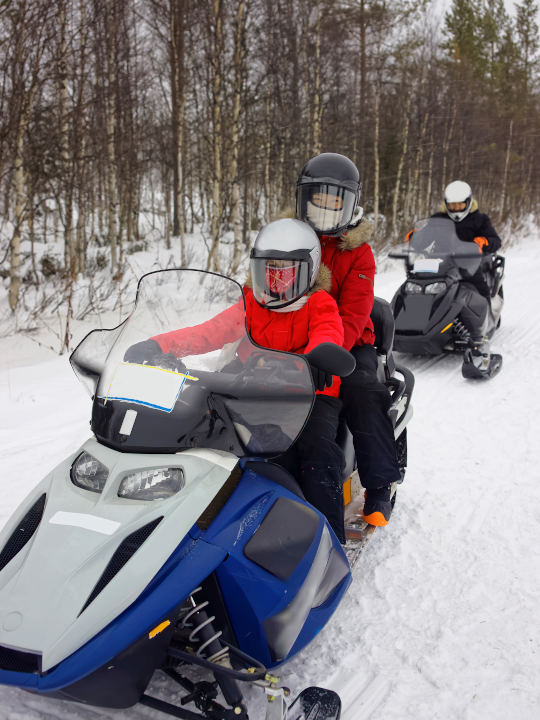Snowmobile Insurance
Overview

Snowmobile insurance is a type of coverage designed to protect you financially in case of accidents, damage, or liability involving your snowmobile. Snowmobiles are recreational vehicles used for winter sports and outdoor activities in snowy conditions. Just as with other types of insurance, snowmobile insurance helps mitigate the financial risks associated with owning and operating these vehicles.
Key points about Snowmobile Insurance:
-
Coverage Options:
Snowmobile insurance offers various coverage options
that you can choose based on your needs. Common
coverage types include:
- Liability Coverage: This covers bodily injury and property damage you might cause to others while operating your snowmobile.
- Collision Coverage: This pays for repairs to your snowmobile if it's damaged in an accident with another snowmobile, object, or vehicle.
- Other-Than-Collision Coverage: This covers non-collision damage, such as theft, vandalism, fire, and natural disasters.
- Uninsured/Underinsured Motorist Coverage: If you're involved in an accident with an uninsured or underinsured snowmobile operator, this coverage helps pay for your medical expenses and property damage.
- Medical Payments Coverage: This covers medical expenses for you and your passengers if you're injured in a snowmobile accident.
- Accessory Coverage: This optional coverage protects accessories and add-ons you've added to your snowmobile, like custom equipment or specialized gear.
- Premiums: Similar to other insurance types, you'll pay a premium for snowmobile insurance. Premiums can vary based on factors such as your location, the type of snowmobile you own, your riding habits, and the coverage options you choose.
- Deductibles: Most snowmobile insurance policies have deductibles, which is the amount you'll need to pay out of pocket before your insurance coverage applies. Deductibles can be per-incident or annual.
- Reimbursement: If you have a covered claim, you'll need to file a claim with your insurance provider. You'll typically need to provide documentation, such as accident reports and repair estimates. After your claim is approved, your insurance company will reimburse you for eligible expenses, minus any deductible.
- Coverage Limits: Insurance policies often have coverage limits which define the maximum amount the insurance company will pay for a covered claim. It's important to understand these limits to ensure you have sufficient coverage.
- Exclusions and Conditions: Like all insurance policies, snowmobile insurance may have exclusions and specific conditions. It's important to read and understand your policy to know what is and isn't covered.
Snowmobile insurance is not typically required by law in all jurisdictions, but it's strongly recommended to protect yourself, your passengers, and your investment. Before purchasing snowmobile insurance, review different policy options, compare quotes from multiple insurance providers, and choose a policy that meets your needs and provides adequate coverage for your winter adventures.


